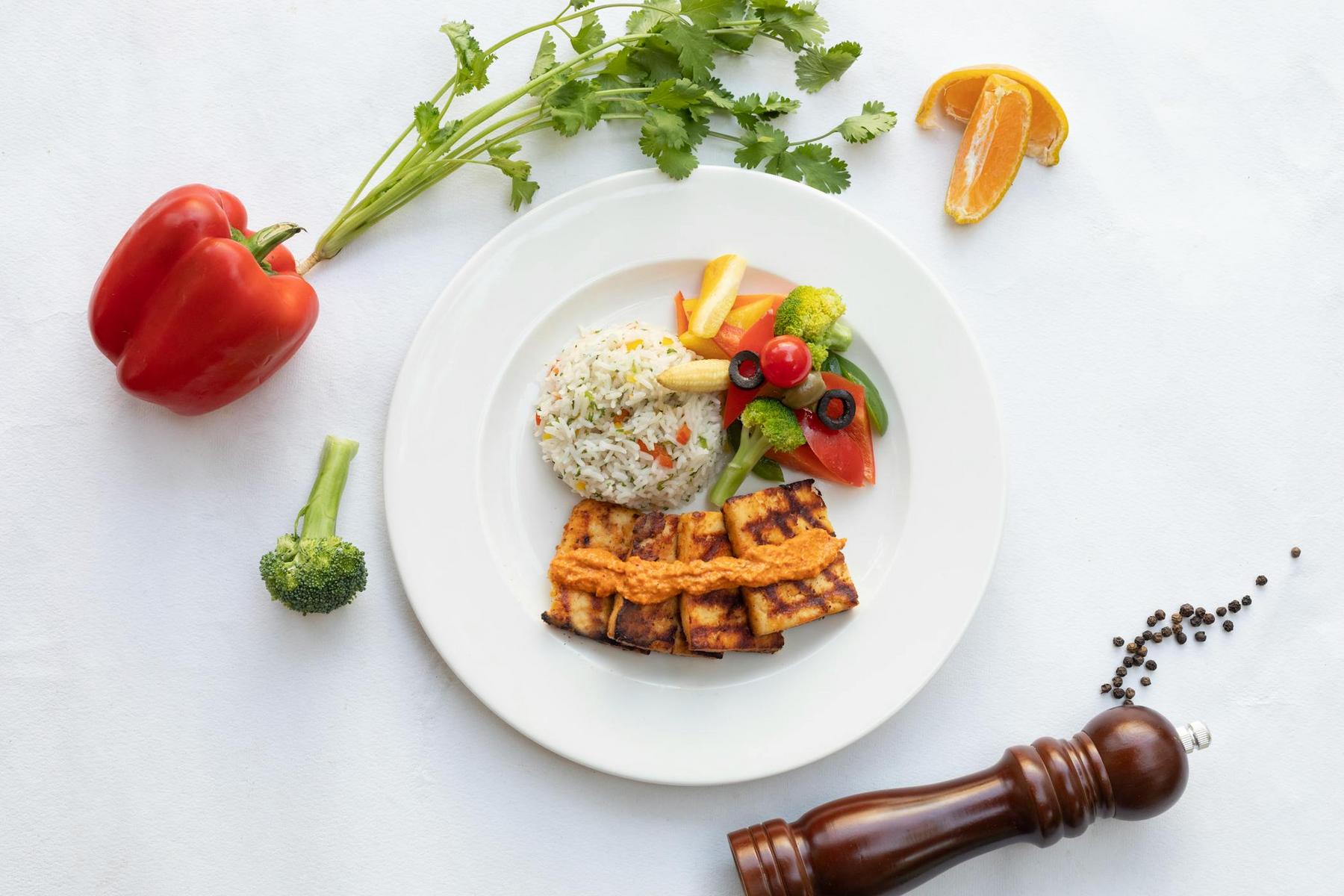In the pursuit of effective weight management, many focus exclusively on what they eat while overlooking how food is prepared. Research demonstrates that cooking methods significantly impact both nutritional integrity and caloric content—two critical factors for successful weight loss. Modern studies show that optimal cooking techniques can preserve up to 91.1% of vitamins in vegetables while simultaneously reducing meal caloric density by 20-30% compared to traditional methods. For Australians navigating weight management in 2025, understanding these evidence-based cooking principles creates a powerful opportunity to enhance nutritional outcomes without sacrificing flavour or satisfaction.
Why Does Cooking Method Matter for Weight Loss?
The biochemical impact of heat, water, and air exposure fundamentally alters food composition in ways that directly affect weight management outcomes. When we cook food, complex physicochemical changes occur that can either preserve or degrade essential nutrients.
Water-soluble vitamins (B complex and vitamin C) are particularly vulnerable during cooking processes. Research shows that boiling green leafy vegetables can leach 40-60% of folate and 50-70% of vitamin C into cooking water—effectively washing away nutrients critical for metabolic function and weight regulation. Fat-soluble vitamins (A, D, E, K) show greater resilience during dry-heat methods but require some dietary fat for optimal absorption—an important consideration when designing calorie-conscious meals.
Protein structures undergo significant transformations during cooking. Moderate heat improves amino acid accessibility and digestibility, but prolonged high-temperature cooking creates advanced glycation end products (AGEs) associated with metabolic dysfunction. Similarly, carbohydrate-rich foods experience starch gelatinization that directly influences glycemic response—studies indicate that al dente pasta has a 30% lower glycemic index than overcooked varieties, creating meaningful differences in blood sugar stability and hunger management.
These biochemical realities make cooking technique selection a fundamental component of effective weight management strategy, not merely a culinary preference.
Which Water-Based Cooking Methods Best Preserve Nutrients?
Water-based cooking methods offer excellent options for nutrient retention when executed properly. Their effectiveness varies significantly based on technique, temperature, and duration.
Steaming: The Gold Standard for Nutrient Preservation
Steaming consistently outperforms other methods in clinical nutrition research, maintaining 85-95% of vitamin C and 90-100% of glucosinolates in cruciferous vegetables—compounds linked to improved metabolic health. This represents a 40-60% improvement in nutrient retention compared to boiling. The indirect vapour contact during steaming minimizes oxidative damage while simultaneously softening dietary fibre to enhance satiety signals.
Notably, clinical trials associate steamed vegetable consumption with 23% higher meal satisfaction scores compared to raw consumption, attributed to improved texture and flavour profiles without added calories. This satisfaction factor becomes crucial for sustainable weight management.
Optimizing steaming technique further enhances outcomes:
- Position delicate vegetables (spinach, zucchini) above sturdier varieties (carrots, beets) to prevent overcooking
- Add herbs or citrus zest to steaming water for flavour infusion without caloric addition
- Collect condensed vapour droplets containing water-soluble nutrients for use in sauces or soups
Poaching: Gentle Protein Preparation
For protein-rich foods essential to weight management, poaching offers significant advantages. Maintaining temperatures between 70-80°C preserves 95% of native protein structure while allowing natural fats to remain suspended in cooking liquid. This gentle approach reduces final dish fat content by 50-70% compared to pan-frying.
Research demonstrates that salmon poached in flavoured broth retains 83% of omega-3 fatty acids versus only 45% retention in grilled preparations—preserving these compounds that support metabolic function and satiety regulation.
What Dry-Heat Cooking Methods Support Weight Loss Goals?
Dry-heat cooking techniques, when properly executed, offer exceptional benefits for weight management by enhancing flavour while reducing unnecessary calories.
Grilling: Effective Fat Reduction
Grilling reduces total fat content in meats by 20-35% through controlled rendering while simultaneously creating Maillard reaction products that enhance umami perception. This flavour intensification allows for greater satisfaction with smaller portions—a cornerstone principle of sustainable weight management.
To maximize health benefits while grilling:
- Marinate poultry in lemon juice or vinegar before grilling to decrease heterocyclic amine formation by 92-96%
- Alternate high-moisture vegetables (mushrooms, tomatoes) with denser varieties (eggplant, peppers) on kebabs to ensure even cooking
- Maintain approximately 10cm between food and heat source to limit polycyclic aromatic hydrocarbon formation
Roasting: Concentrated Nutrition and Flavour
Controlled dehydration during roasting concentrates nutrients and flavours without requiring additional fats or oils. Sweet potatoes roasted at 180°C for 45 minutes retain 78% of beta-carotene versus only 53% in boiled preparations—a significant difference for this antioxidant that supports metabolic health.
Strategic oil application (just 1-2 teaspoons per baking sheet) enhances lipid-soluble nutrient absorption without significant caloric addition, making roasting an excellent technique for root vegetables and lean proteins in weight-conscious meal planning.
How Can Technology Enhance Nutrient Preservation?
Modern cooking technologies offer advantages for those prioritizing both nutrition and weight management.
Microwave Cooking: Rapid Nutrient Preservation
Despite common misconceptions, microwave cooking excels at nutrient retention due to its rapid heating mechanism (typically 2-5 minutes) that limits thermal degradation. Research demonstrates that microwaving preserves 98% of anthocyanins in purple cabbage compared to just 67% retention after boiling.
The electromagnetic waves in microwave ovens preferentially excite water molecules, creating internal steam that minimizes nutrient leaching while efficiently cooking food. For time-constrained Australians managing weight, this offers a practical solution that doesn’t compromise nutritional integrity.
Best practices for microwave cooking include:
- Using ventilated lids to prevent pressure buildup while reducing splatter
- Employing 50% power intervals with stirring between cycles to achieve even heating
- Adding minimal water (1-2 tablespoons) when cooking vegetables to create steam while limiting nutrient loss
Comparison of Nutrient Retention by Cooking Method
| Cooking Method | Vitamin C Retention | Water-Soluble B Vitamin Retention | Fat Loss in Proteins | Cooking Time |
|---|---|---|---|---|
| Steaming | 85-95% | 90-95% | Minimal | 5-15 minutes |
| Boiling | 40-50% | 50-60% | Minimal | 5-15 minutes |
| Poaching | 75-85% | 80-90% | 50-70% | 8-12 minutes |
| Grilling | 60-70% | 70-80% | 20-35% | 8-15 minutes |
| Roasting | 65-75% | 70-80% | 15-25% | 30-60 minutes |
| Microwaving | 90-98% | 90-95% | Minimal | 2-5 minutes |
Which Synergistic Techniques Maximize Nutritional Value?
Beyond individual cooking methods, integrating strategic preparation techniques creates synergistic benefits for both nutrition and weight management.
Pre-Treatment Protocols
Research consistently demonstrates that how food is prepared before cooking significantly impacts nutritional outcomes:
- Leaving skins on potatoes doubles polyphenol retention and reduces vitamin C loss during cooking by 25%
- Allowing sliced garlic to rest 10 minutes before cooking increases allicin preservation by 40%—maximizing this compound’s metabolic benefits
- Cutting vegetables into larger pieces reduces surface area exposure and subsequent nutrient loss
Flavour Enhancement Strategies
Creating flavour depth without additional calories represents a crucial skill for sustainable weight management:
- Combining roasted mushrooms (natural glutamate source) with steamed greens enhances perceived richness without added sodium
- Applying a small amount (1 teaspoon) of vinegar or citrus after cooking improves iron bioavailability from plant sources by 35-50% while brightening flavours
- Using aromatic herbs added at the end of cooking maximizes their volatile compounds while reducing the temptation to add calorie-dense sauces
Common Misconceptions About Cooking and Nutrition
Several persistent myths regarding cooking and nutrition deserve correction based on current evidence:
The Raw Food Fallacy
While raw diets preserve heat-sensitive nutrients, they significantly reduce the bioavailability of others. Research shows that raw tomatoes provide 80% less bioavailable lycopene compared to cooked versions. A balanced approach incorporating both raw and gently cooked foods optimizes overall nutrient intake and absorption—creating more effective nutritional support for weight management.
Frozen Produce Equivalence
Modern rapid-freezing techniques preserve 90-100% of nutrients in vegetables, making high-quality frozen produce nutritionally comparable to fresh when properly prepared. This reality offers significant practical advantages for consistent nutritional intake during weight management efforts, allowing for greater meal planning flexibility and reduced food waste.
Integrating Cooking Techniques for Optimal Weight Management
The evidence clearly indicates that optimal weight management cuisine employs strategic method sequencing: quick microwaving for greens, grilling for lean proteins, and roasting for root vegetables. This combination preserves 85-95% of nutrients while reducing caloric density by 25-30% compared to traditional Western cooking approaches.
Research demonstrates that patients receiving culinary skills training focused on these optimized techniques achieve 7.3% greater weight loss compared to those receiving only dietary guidelines. This practical application of nutritional biochemistry transforms abstract weight management principles into actionable daily practices that support long-term success.
Does cooking always reduce nutritional value?
No, cooking affects different nutrients in various ways. While some water-soluble vitamins may decrease during certain cooking methods, other nutrients actually become more bioavailable. For example, lycopene in tomatoes increases by up to 80% when cooked, and certain antioxidants in carrots become more accessible. Using methods like steaming, which preserves up to 95% of vitamin C, minimizes nutrient loss while making food more digestible.
Which cooking method is best for weight loss while preserving nutrients?
Steaming consistently ranks as the most effective technique for weight-conscious individuals, as it requires no added fats while preserving 85-95% of water-soluble vitamins. Research shows steamed meals can reduce overall caloric density by 20-30% compared to fried alternatives while maintaining nutrient integrity. For proteins, poaching offers similar benefits, reducing fat content by 50-70% compared to pan-frying while preserving amino acid profiles.
How do cooking temperatures affect nutritional quality?
Temperature significantly impacts nutrient retention. Most vitamins begin degrading at temperatures above 90°C, while proteins denature and lose bioavailability at temperatures exceeding 150°C for extended periods. Studies indicate that moderate temperatures (70-85°C) for appropriate durations optimize the balance between food safety, nutrient preservation, and palatability—factors all critical for sustainable weight management.
Can proper cooking techniques improve satiety for weight management?
Yes, research demonstrates that properly cooked vegetables and proteins enhance satiety signals by 15-25% compared to improperly prepared alternatives. This occurs through improved texture, enhanced flavour compounds, and greater digestibility of key nutrients. Clinical trials show participants consuming optimally prepared meals report feeling satisfied with 20% less food volume, which can contribute to more sustainable weight management.
Are microwave ovens effective for nutrient-preserving cooking?
Contrary to common misconceptions, microwave cooking ranks among the best methods for nutrient retention due to its short cooking times and minimal water requirements. Studies show that microwaved vegetables retain up to 98% of their vitamin C compared to 50% in boiled alternatives. Additionally, microwave cooking helps eliminate the need for added fats while efficiently preparing portion-controlled meals.



